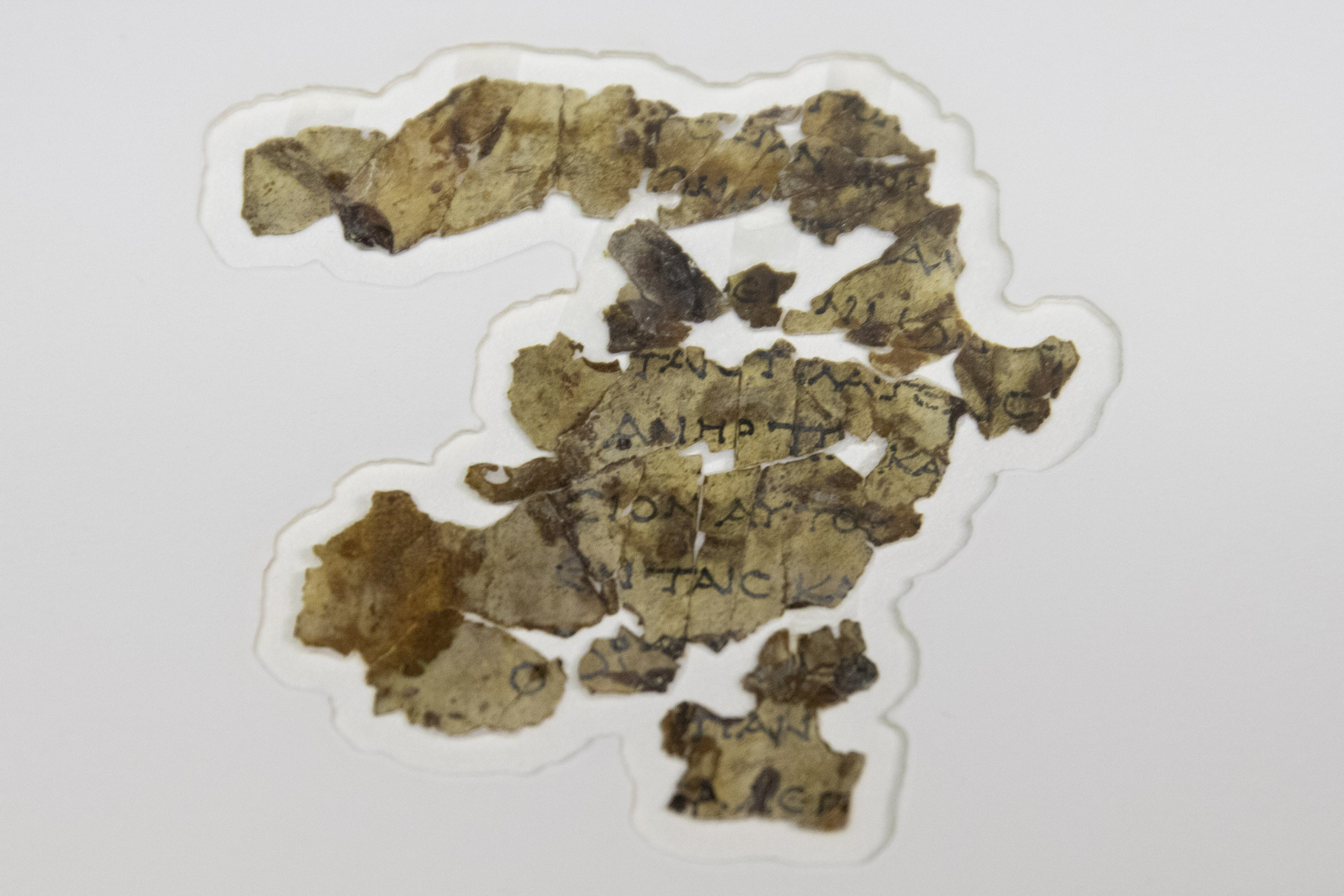
The Israeli Antiquities Authority is revealing fragments of the Dead Sea manuscripts unearthed after 60 years at the Dead Sea Manuscript Conservation Research Institute on the 16th (local time) to reporters. AP=Yonhap News
Israeli archaeologists found fragments of Bible scrolls estimated to be 1900 years old in a desert cave near Jerusalem, AFP and local media reported on the 16th (local time). Radiocarbon dating suggests that these fragments were hidden during the Jewish Roman Uprising some 1900 years ago.
The Israeli Antiquities Administration (IAA) said in a statement today that “the first archaeological excavation in about 60 years has unearthed a fragment of a Bible scroll.”
According to the IAA, parts of the Old Testament books of Zechariah and Nahum are written in Greek on about 20 pieces of parchment scrolls excavated in a cave in the desert of Judea in southern Jerusalem. It is said that the name of the god is also written in ancient Hebrew letters.

The Israeli Antiquities Bureau administrator shows pieces of newly discovered Bible scrolls at the Dead Sea Manuscript Conservation Institute in Jerusalem on the 16th (local time). AP=Yonhap News
The IAA excavation team believes these sculptures were hidden in this cave during the’Bar Kokhba’s Rebellion’ (132-135), a Jewish resistance movement against the Roman Empire.
Manuscripts of the Old Testament excavated in caves on the west bank of the Dead Sea and documents related to Judaism are called’Dead Sea Scrolls’.
The cave where new Dead Sea documents were discovered was named’Horror Cave’ after 40 remains were discovered at once during excavation in the 1960s.
It seems that robbers have not been able to reach the cave until 80m down the cliff by riding a rope.
The oldest Dead Sea document ever unearthed was found in Qumran Cave, located on a cliff in the west bank by a boy who lost a goat in the 1940s-1950s. The production date is estimated to be from the 3rd century BC to the 1st century BC. This is an additional excavation 60 years after the Dead Sea document was first discovered.
In addition to the Bible manuscripts this time, the excavation team also found complete baskets and coins estimated to be 10,000 years old, as well as mummified bodies of children believed to have died 6,000 years ago.

Archaeologist Heim Cohen is looking at a basket he discovered through excavation of 500 caves in the desert at the Dead Sea Manuscript Conservation Institute in Jerusalem on the 16th (local time). This basket is estimated to be 10,000 years old. AP=Yonhap News

An employee of the Israeli Antiquities Authority reveals a silver coin that is believed to have been used during the Jewish Roman Uprising between 132 and 136 AD. AP=Yonhap News
Later, when pieces of parchment that were believed to have been stolen from this “cave of terror” came out, Israeli authorities have been conducting extensive excavations of caves in the Judean wilderness that the robbers seem out of reach. They searched over 500 caves buried in a sheer gorge in the desert region of Judea.
Israeli Hason, IAA director, said, “This discovery began to investigate predators who infiltrated the cave. We must find all the undiscovered data in the cave before the thieves can find it.”

An IAA excavation team descends on a rope to a cave where a second century Bible manuscript was found. Photo Israeli Antiquities Authority
Reporter Han Young-hye [email protected]
![]()
